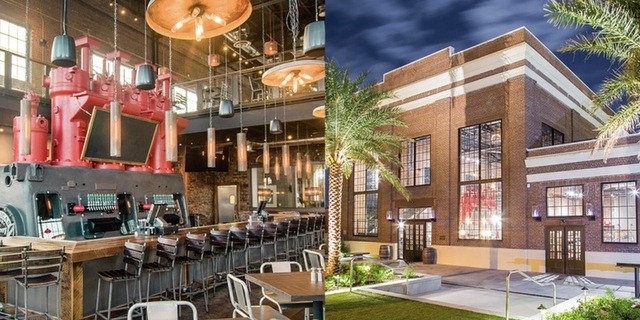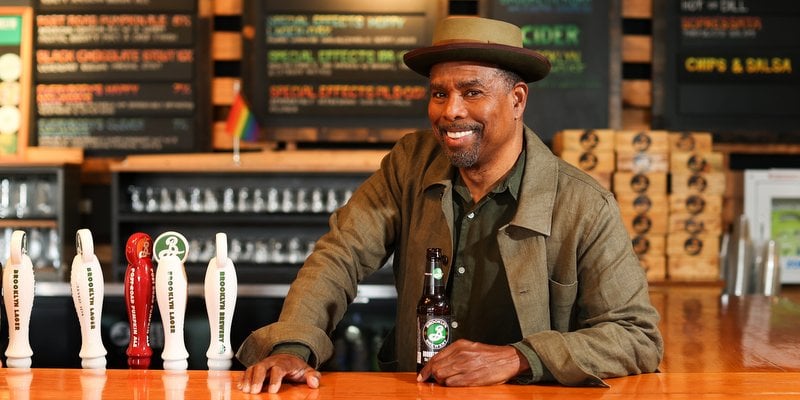
Craft breweries can rebuild communities — simply by purchasing real estate. It feels like every community has a big, wide-open abandoned warehouse-type space that would be perfect for a brewery, but even small spaces (like strip malls and corner shops) can be ideal locales for brewpubs or small-barrel-system startups. Sometimes the previous tenants or the property’s history can even help generate a theme for the brewery — like Abandoned Building Brewery in Easthampton, Mass. — or Jailhouse Brewing Co. in Hampton, Ga., or Old Firehouse Brewery in Williamsburg, Ohio.
These breweries can actually be cornerstones in a community’s redevelopment plans. That’s a message Redevelopment Management Associates (RMA) recently announced to city leaders in Florida and beyond. In states such as Florida, the full-service economic redevelopment firm, still sees growth potential for craft breweries. In other areas, the firm is guiding cities to develop attraction plans for distilleries, co-op breweries and brewpubs. From a recent press release:
“Florida still offers tremendous potential for beer-industry growth,” said Farrell Tiller, RMA’s Economic Development Coordinator. “Recently, The North Miami Beach Community Redevelopment Agency [NMBCRA] announced the state’s first Brewery District and craft brewery incentive program. The NMBCRA recognized a market gap in this area, and RMA guided the CRA through the process.”
Founded in 2009 by Kim Briesemeister and Chris Brown, RMA is comprised of a team of redevelopment experts focused on building better communities — a lot of that in the state of Florida but also for cities, counties and special districts nationwide.
There are clear benefits and pitfalls to reuse real estate, so incentivizing such business opportunities or making friendly regulatory environments is key to creating a brewing community. These large, old and often abandoned buildings are much more than just cheap space. The reasons that craft brewers are so attracted to these spaces is because they are large, open and usually cost less to acquire. There also may be tax incentives available to aid in keeping start-up costs down.
With benefits there are also risks to consider such as zoning regulations that restrict the use of properties. The zone district that these properties are located in, such as industrial, may allow brewing and manufacturing, but may not allow retail or restaurant/tasting room uses. If such uses are not allowed as a matter of right, expansion may require zoning relief. Beyond the zoning considerations, older structures have historic, environmental and title issues that may pose barriers to their redevelopment and repurposing. RMA understands these types of issues require planning:
“With North Miami Beach, RMA analyzed the market potential and developed the framework for a targeted industry incentive program to attract craft breweries,” continued Farrell. But he also warns cities not to jump on the craft beer bandwagon just because it worked in other towns. “The cities who have successfully engaged breweries as part of their revitalization plan, did so after careful analysis and as part of an overall redevelopment strategy.”
Back in 2011, RMA launched the revitalization of Oakland Park, Fla., with the creation of a culinary arts district. That city’s growth was ignited when Funky Buddha brewery relocated to the area. That success story led to craft breweries popping up in many cities including Pompano Beach, Wynwood and more.
Co-op breweries and simple brewpubs are also great tenants that can help revitalize a neighborhood or even help start a district.
Farrell notes that Millennials, who have grown accustomed to drinking craft beer, are now seeking to socialize in brewpubs, where they can enjoy their favorite beers accompanied by housemade foods.
“The demand exists for family-friendly restaurants where guests can enjoy great beer and food while experiencing the good feeling of supporting a local business versus a chain. Brewpubs fit this model and will be the next phase of development.”
Taking a giant leap beyond simple community gathering spots, co-op brewery models are on Tiller’s radar as he tracks states like Montana, New Mexico and Texas, where groups or cooperatives are investing in breweries as a means to stimulate revitalization. Cooperatives are organizations owned collectively by members who share in profits or benefits. While currently there are only a handful of these co-ops in in the United States, Canadian co-ops are touting increased employment and neighborhood unity.
For cities wanting to capitalize on the economic engine of the beer industry, Tiller advised city leaders seek experts to analyze three key areas:
- Feasibility: Does your area have a market of consumers to support the business? And will the city offer incentives to entrepreneurs looking to open and operate breweries in your community?
- Zoning and land use: Is zoning and land use attractive or prohibitive for breweries? Many cities still have antiquated codes that make it difficult for breweries to locate close to their customers and other food and beverage related businesses.
- Real estate environment: Does the available real estate match up to brewery needs? And if not, can it be adapted?
To learn more about these topics, feel free to visit RMA’s website at www.rma.us.com.





Jeremy Perri says
Brian Hayes